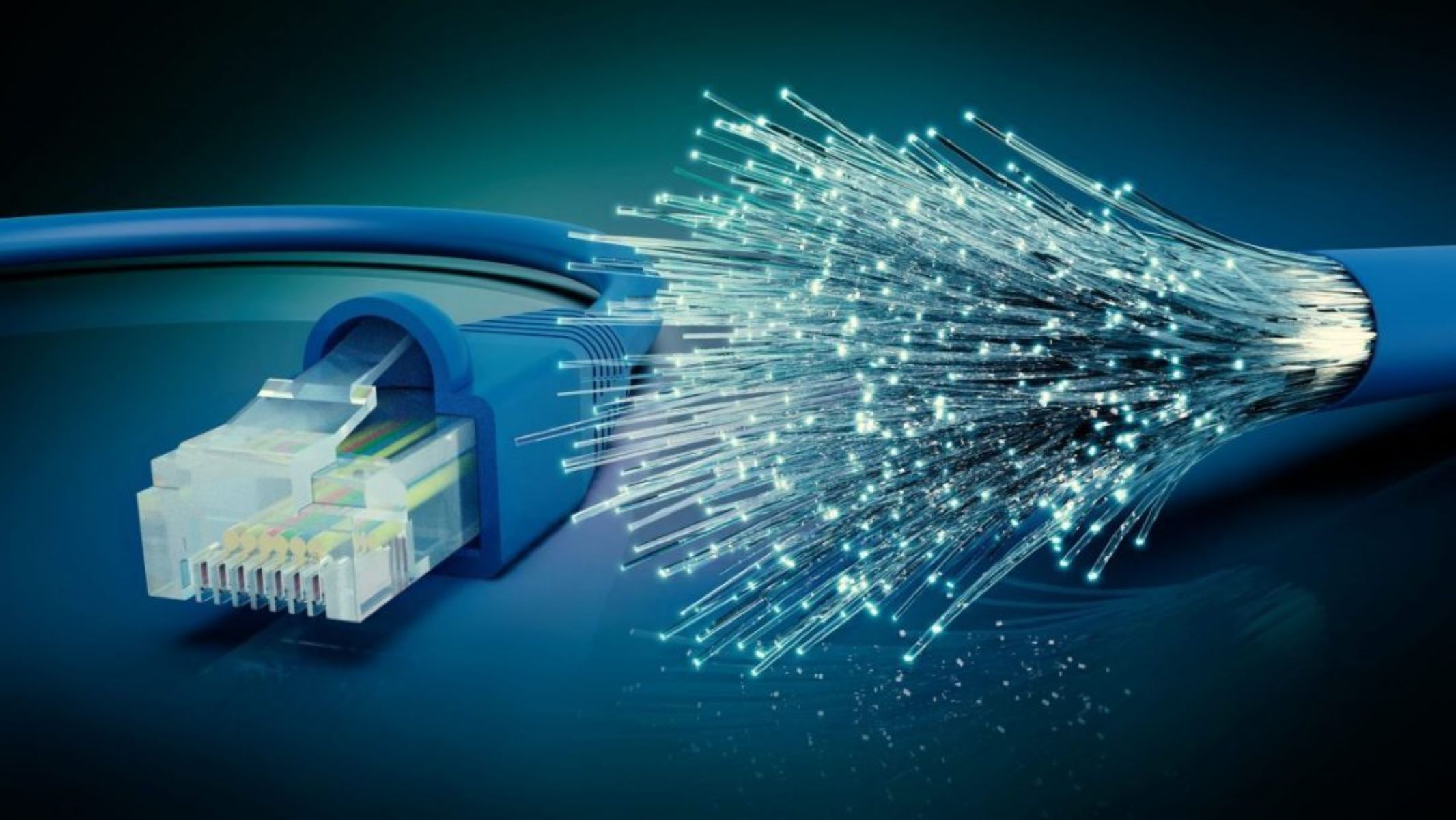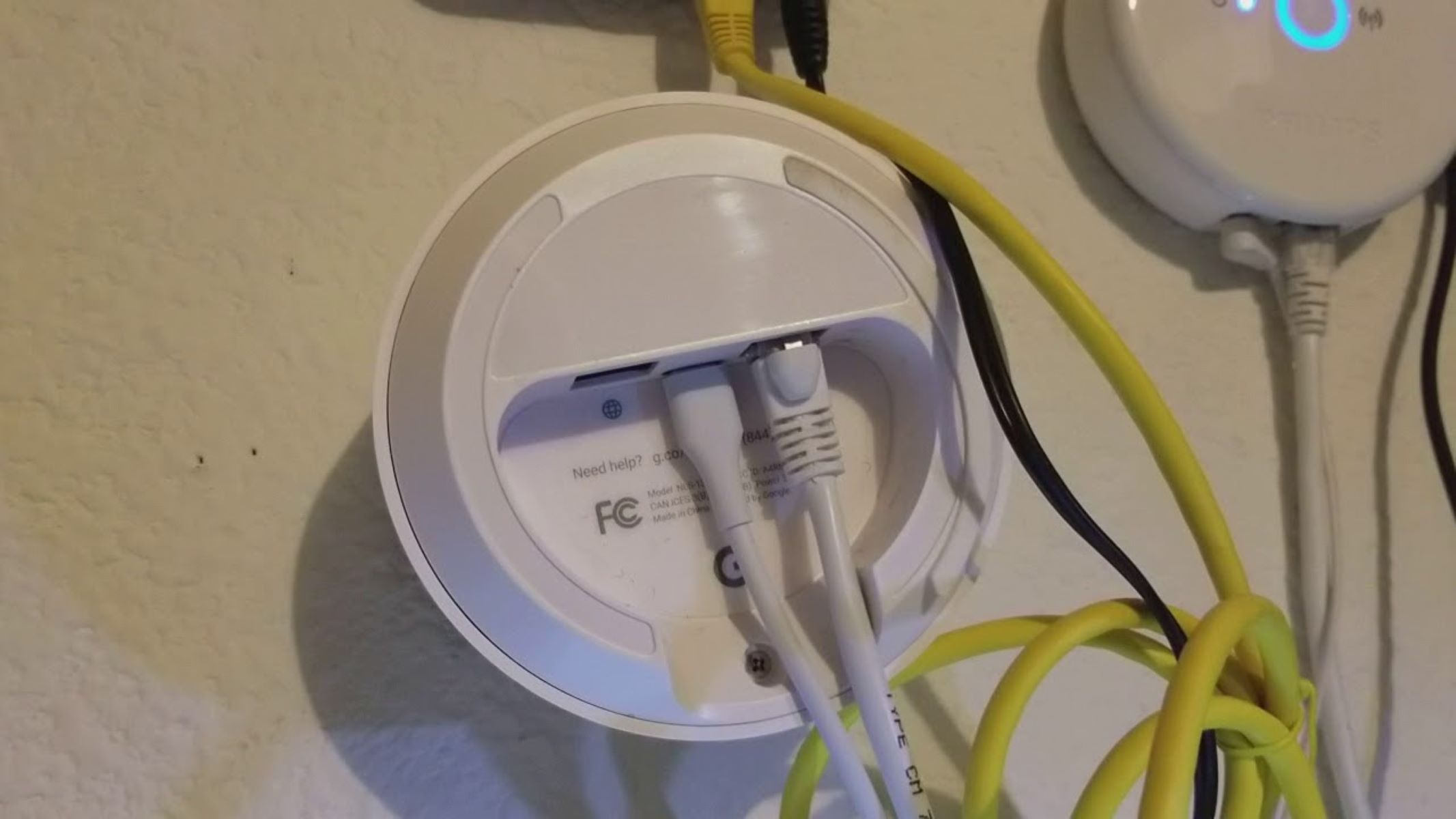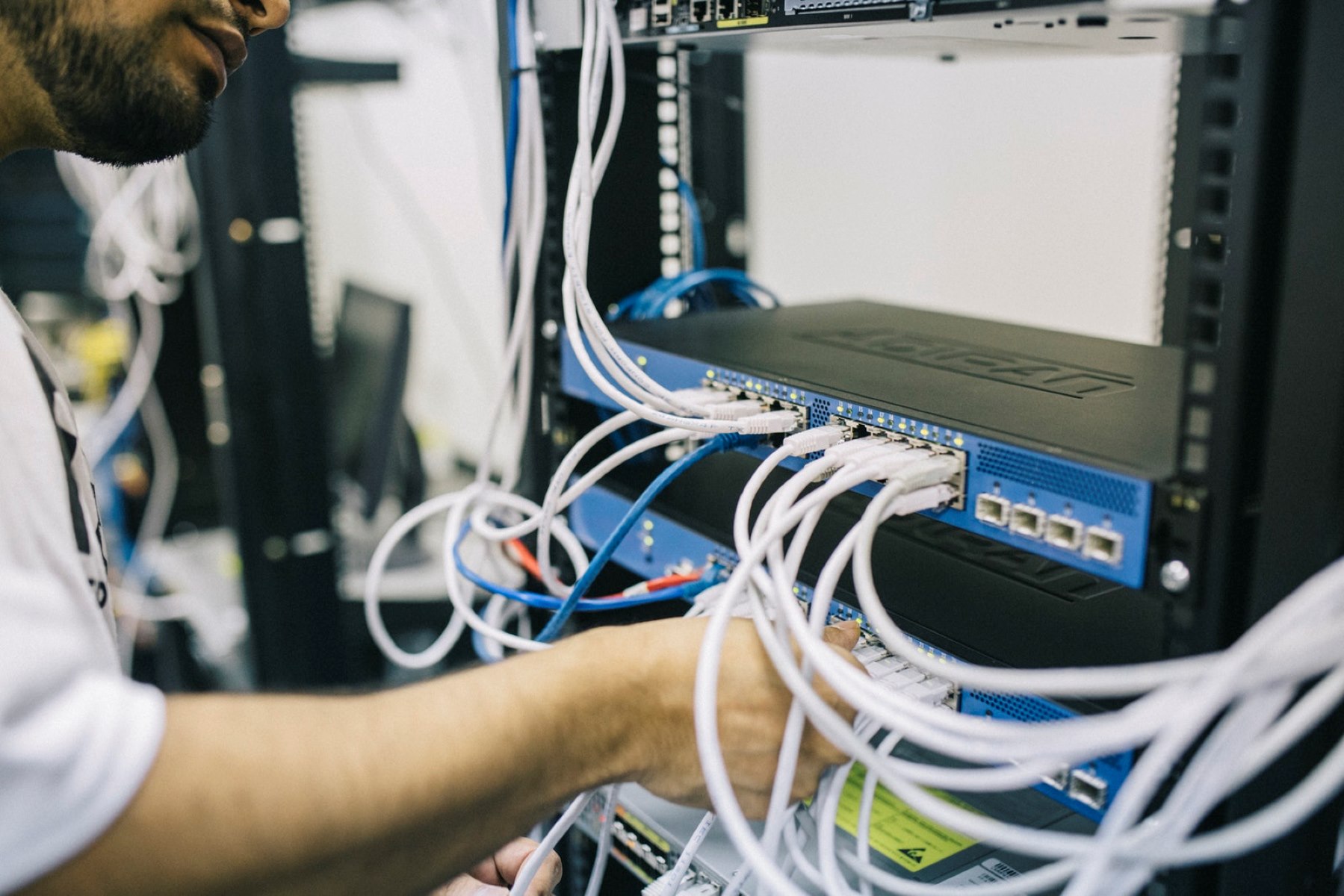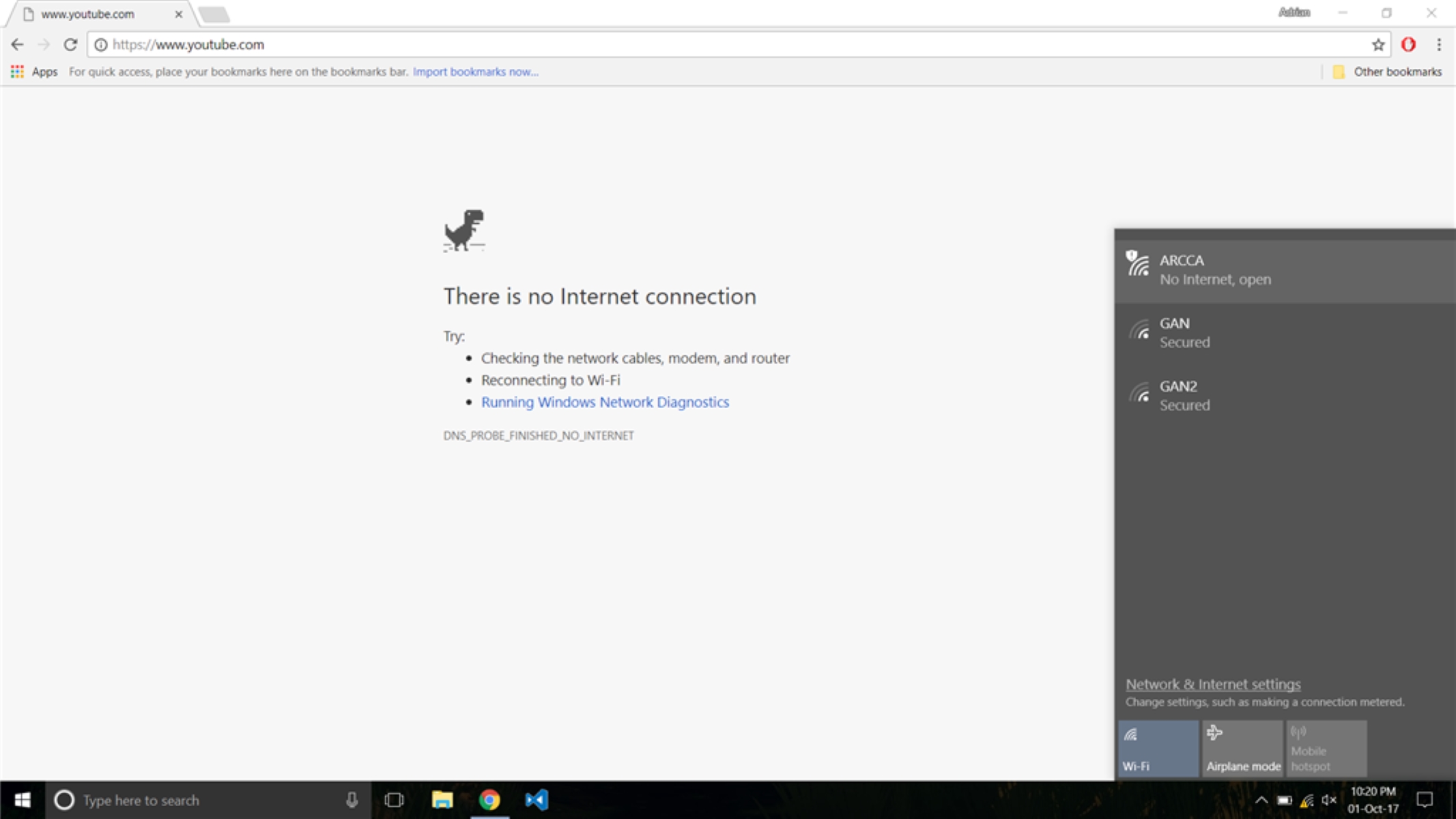Introduction
Ethernet IP addresses are essential for connecting devices to a network and enabling communication between them. An IP address serves as a unique identifier for a device on a network, allowing data to be transmitted and received accurately. Whether you’re troubleshooting network issues or simply trying to configure a new device, knowing how to find the Ethernet IP address of a device is crucial.
In this article, we will explore various methods to help you find the Ethernet IP address of your device. These methods are applicable to different operating systems, including Windows, Mac, and Linux. Additionally, we will discuss how to access the router admin page and use IP scanning software or third-party applications for more advanced users.
Understanding the concept of Ethernet IP addresses is important before diving into the methods. An IP address consists of four sets of numbers separated by periods, such as 192.168.0.1. The IP address allows devices on the network to locate and communicate with one another. Each device connected to the network, whether it’s a computer, router, or printer, has a unique IP address.
There are two types of IP addresses: dynamic and static. A dynamic IP address is automatically assigned by a Dynamic Host Configuration Protocol (DHCP) server. These addresses are temporary and can change over time. On the other hand, a static IP address is manually configured and remains fixed, making it easier to establish a stable connection to devices in a network.
Now that we have a basic understanding of Ethernet IP addresses, let’s explore the various methods you can use to find the IP address of your device. By following these methods, you will be able to easily locate the IP address and troubleshoot network issues or configure devices efficiently.
Understanding Ethernet IP addresses
Ethernet IP addresses play a critical role in connecting devices within a network. They serve as unique identifiers for devices, enabling data transmission and communication between them. To comprehend Ethernet IP addresses, it is essential to familiarize yourself with the concept of IP addressing.
IP stands for Internet Protocol, which is a set of rules governing data communication over networks. An IP address consists of four sets of numbers, separated by periods, such as 192.168.0.1. Each section can range from 0 to 255, resulting in a vast range of possible IP addresses.
The IP address is divided into two parts: the network address and the host address. The network address represents the network to which the device is connected, whereas the host address identifies the specific device within that network.
There are two main types of IP addresses: IPv4 and IPv6. IPv4, the current dominant version, uses 32 bits to represent an IP address. IPv6, the newer version, utilizes 128 bits, allowing for a significantly larger number of unique addresses. However, for the purpose of this article, we will focus on IPv4 addresses.
IPv4 addresses can be further classified into two categories: public and private addresses. Public addresses are unique and visible on the internet. These addresses are assigned by Internet Service Providers (ISPs) to specific devices or networks. Private addresses, on the other hand, are used within private networks, such as a home or office network. These addresses are not directly accessible from the internet.
Private IP addresses are governed by specific address ranges defined in the Internet Assigned Numbers Authority (IANA) guidelines. The most commonly used private IP address ranges are:
- 10.0.0.0 to 10.255.255.255
- 172.16.0.0 to 172.31.255.255
- 192.168.0.0 to 192.168.255.255
These address ranges are reserved for use in private networks and are not routable on the internet.
Understanding the basics of Ethernet IP addresses is crucial for locating and configuring devices on a network. By grasping the concepts outlined here, you will be equipped with the knowledge needed to further explore the methods of finding Ethernet IP addresses discussed in the subsequent sections.
Methods to Find Ethernet IP Address
There are several methods you can utilize to find the Ethernet IP address of a device. These methods vary depending on the operating system and the level of technical expertise required. Let’s explore some of the commonly used methods:
- Command Prompt (Windows): On a Windows computer, you can open the Command Prompt and use the “ipconfig” command to display the IP address information. It will provide the IP address assigned to your Ethernet adapter, along with other network details.
- System Preferences (Mac): If you’re using a Mac, you can access the Network settings in the System Preferences. In the Network window, select your Ethernet connection and click on the “Advanced” button. From there, navigate to the TCP/IP tab to view the IP address assigned to your Ethernet connection.
- Network Settings (Linux): On Linux systems, you can find the Ethernet IP address by accessing the network settings. Open the Terminal and enter the command “ifconfig” or “ip addr show” to display the network interface information, including the IP address of your Ethernet connection.
- Router Admin Page: Another method is accessing your router’s administration page. This can be done by entering the router’s IP address in a web browser. Once logged in, navigate to the connected devices or DHCP client list section to find the IP addresses of devices connected to your network.
- Ethernet Adapter Settings: For more advanced users, accessing the Ethernet adapter settings can provide the IP address information. Go to the Control Panel or Network and Sharing Center on Windows, or System Preferences on Mac, and navigate to the network adapter settings to find the Ethernet IP address.
- IP Scanning Software: Utilizing IP scanning software can be helpful when you need to discover all IP addresses within your network. This software scans your network and presents a list of active IP addresses, including the Ethernet IP addresses of devices connected to the network.
- Using Third-Party Applications: There are various third-party applications available that can simplify the process of finding Ethernet IP addresses. These applications provide an intuitive interface and allow you to quickly retrieve the IP address information for connected devices.
By using one or a combination of these methods, you will be able to identify the Ethernet IP address of your device. Keep in mind that the appropriate method may vary based on your operating system and technical proficiency. However, with a little exploration, you will be able to successfully locate the IP address and proceed with configuring or troubleshooting your network.
Method 1: Command Prompt (Windows)
One of the easiest and quickest methods to find the Ethernet IP address on a Windows computer is by using the Command Prompt. By entering a simple command, you can retrieve the necessary network information. Here’s how:
- Press the Windows key + R to open the Run dialog box.
- Type “cmd” and click “OK” to open the Command Prompt.
- In the Command Prompt window, type “ipconfig” and press Enter.
- A list of network adapters will be displayed. Look for the Ethernet adapter that you are interested in.
- Under the Ethernet adapter section, you will see the IPv4 address listed as “IPv4 Address” or “IP Address”. This is the Ethernet IP address assigned to your device.
It is important to note that if your computer is connected to both Wi-Fi and Ethernet, the Command Prompt will display the IP address of both connections. Make sure to identify the IP address associated with your Ethernet adapter.
This method proves to be useful for not only finding the Ethernet IP address but also for obtaining other essential network information, such as the subnet mask and default gateway, which can be helpful in troubleshooting network connectivity issues. With the Command Prompt method, you can quickly retrieve the IP address needed to configure or troubleshoot your Ethernet connection.
Method 2: System Preferences (Mac)
For Mac users, finding the Ethernet IP address can be accomplished through the System Preferences settings. Follow the steps below to retrieve the IP address of your Ethernet connection:
- Click on the Apple menu icon in the top-left corner of your screen and select “System Preferences” from the dropdown menu.
- In the System Preferences window, click on the “Network” icon.
- In the Network window, you will see a list of network connections on the left-hand side. Select the Ethernet connection from the list.
- Click on the “Advanced” button located at the bottom right corner of the window.
- Switch to the “TCP/IP” tab in the Advanced settings.
- The Ethernet IP address will be displayed under the “IPv4 Address” or “IP Address” section.
By following these steps, you can easily find the IP address assigned to your Ethernet connection on a Mac. This method is straightforward, providing quick access to the necessary network information for your device.
It’s worth noting that if you have multiple network adapters, such as both Ethernet and Wi-Fi connections, make sure to select the Ethernet connection to view the corresponding IP address.
Using the System Preferences method on a Mac allows for convenient access to network settings, making it efficient for configuring or troubleshooting your Ethernet connection. Retrieve your Ethernet IP address using this method and proceed with any necessary network-related tasks with ease.
Method 3: Network settings (Linux)
If you are using a Linux system, you can find the Ethernet IP address by accessing the network settings through the Terminal. Follow the steps below to retrieve the IP address of your Ethernet connection:
- Open the Terminal by searching for it in the Applications or using the keyboard shortcut Ctrl + Alt + T.
- In the Terminal window, type either “ifconfig” or “ip addr show” command and press Enter.
- A list of network interfaces will be displayed, including the Ethernet connection.
- Look for the Ethernet connection, which is typically labeled as “eth0” or “enp0sX”, where X represents the number assigned to the connection.
- Next to the Ethernet connection, you will find the IP address listed under the “inet” or “inet addr” section.
Using the Terminal to access network settings on Linux provides a straightforward method to retrieve the IP address of your Ethernet connection. Depending on your Linux distribution and networking setup, the command used may vary, but the general idea remains the same.
It’s important to note that for some distributions, like Ubuntu, the traditional “ifconfig” command may not be available by default. In such cases, you can use the “ip addr show” command as an alternative to retrieve the required information.
By following these steps, Linux users can quickly obtain the IP address of their Ethernet connection. This information can be useful for various networking tasks, such as configuring network settings or troubleshooting network connectivity issues.
Method 4: Router Admin Page
If you have access to your router’s administration page, you can find the Ethernet IP addresses of connected devices. The router admin page provides a central location where you can view and manage various network settings. To find the Ethernet IP address using this method, follow the steps outlined below:
- Open a web browser on a device connected to the same network as your router.
- Type the IP address of your router in the browser’s address bar and press Enter. Common router IP addresses include 192.168.0.1, 192.168.1.1, or 192.168.0.254. Refer to your router’s manual or check the router label for the correct IP address.
- A login page for your router’s administration page will appear. Enter the username and password to log in. If you haven’t changed the default login credentials, consult your router’s manual for the default username and password.
- Once logged in, navigate to the “Connected Devices”, “Device List”, or similar section in the router admin page.
- You will see a list of devices currently connected to your network. Look for the device with the Ethernet connection or the device name that corresponds to your device.
- The Ethernet IP address associated with the device will be listed next to it.
Using the router admin page is a straightforward method to find the Ethernet IP address, as it provides a centralized view of all connected devices on your network. It eliminates the need to access individual devices or use command line tools.
It’s important to note that the router admin page interface and options may vary depending on the brand and model of your router. If you are unsure how to access the admin page or navigate to the connected devices section, refer to your router’s manual or consult the manufacturer’s website for specific instructions.
By utilizing the router admin page, you can easily find the Ethernet IP addresses of connected devices, allowing you to identify and manage devices on your network efficiently.
Method 5: Ethernet Adapter Settings
Another method to find the Ethernet IP address is by accessing the Ethernet adapter settings on your device. This method allows you to directly view and configure the IP address associated with your Ethernet connection. Follow the steps below to retrieve the Ethernet IP address using this method:
- On a Windows computer, go to the Control Panel or Network and Sharing Center. On a Mac, open System Preferences.
- Locate the Network or Network and Internet section in the Control Panel or System Preferences.
- Look for the Ethernet or Wired connection in the list of network adapters.
- On Windows, right-click on the Ethernet connection and select Properties. On a Mac, select the Ethernet connection and click on the Advanced button.
- In the Ethernet adapter properties or advanced settings, locate the IPv4 or IP Address section.
- The Ethernet IP address assigned to your device will be displayed in this section.
By accessing the Ethernet adapter settings, you gain direct access to the IP address information associated with your Ethernet connection. This method is particularly useful if you need to view or modify network configurations for your device.
It’s important to note that the steps may slightly vary depending on your operating system version or specific network settings. However, with a bit of exploration within the Network or Control Panel settings, you will be able to find the Ethernet IP address with ease.
By using this method, you can easily retrieve the Ethernet IP address on your device and proceed with any necessary network-related tasks, such as configuration or troubleshooting.
Method 6: IP Scanning Software
If you need to discover all IP addresses within your network, using IP scanning software can be an efficient method. IP scanning software automatically scans your network and provides you with a comprehensive list of active IP addresses, including the Ethernet IP addresses of connected devices. Follow the steps below to utilize IP scanning software:
- Choose an IP scanning software: There are various IP scanning tools available, both free and paid. Popular options include Advanced IP Scanner, Angry IP Scanner, and Nmap.
- Download and install the software: Visit the official website of the IP scanning software you have chosen and download the appropriate version for your operating system. Install the software following the provided instructions.
- Launch the software: Open the IP scanning software on your computer.
- Configure scan settings: Set the scanning options according to your preferences. You can typically specify the IP range or subnets to scan.
- Start the scan: Initiate the scanning process by clicking on the “Scan” button or similar. The software will scan your network and retrieve a list of active IP addresses.
- View the scan results: Once the scan is complete, the software will display the list of active IP addresses found on your network. Look for the IP addresses associated with Ethernet connections or the devices you are interested in.
Using IP scanning software provides a comprehensive and automated approach to finding Ethernet IP addresses within your network. It allows you to quickly identify and gather information about devices connected to your network, making it effective for both home and business environments.
Keep in mind that IP scanning software can sometimes be flagged by security software or firewalls due to its nature of scanning for active IP addresses. Therefore, ensure that you have proper permissions and whitelist the software if necessary.
By utilizing IP scanning software, you can efficiently discover the Ethernet IP addresses of devices in your network. This method is particularly useful when you need to identify IP addresses on a large network or when manual methods are not feasible.
Method 7: Using Third-Party Applications
Another convenient method to find Ethernet IP addresses is by using third-party applications specifically designed for this purpose. These applications provide user-friendly interfaces and streamline the process of discovering and managing IP addresses within a network. Follow the steps below to use third-party applications:
- Select a third-party application: Explore options for IP scanning or network management applications. Examples include Advanced IP Scanner, Fing, or SolarWinds IP Address Manager.
- Download and install the application: Visit the official website of the chosen application and download the appropriate version for your operating system. Follow the installation instructions provided.
- Launch the application: Open the application on your computer.
- Configure scan settings: Set up the application according to your network requirements. Depending on the application, you may need to specify the IP range or network subnet to scan.
- Initiate the scan: Click on the “Scan” or similar button to start the scanning process. The application will scan your network and retrieve a list of active IP addresses.
- View the scan results: Once the scan is complete, the application will display the list of active IP addresses found on your network. Look for the Ethernet IP addresses associated with the devices you are interested in.
Using third-party applications simplifies the process of finding Ethernet IP addresses by providing intuitive interfaces and advanced scanning capabilities. These applications often offer additional features such as device identification, network monitoring, and IP address management, making them valuable tools for network administrators and advanced users.
When selecting a third-party application, ensure that it is trustworthy and well-reviewed. Research the application, read user reviews, and verify its compatibility with your operating system before proceeding with the installation.
By utilizing third-party applications, you can effectively discover and manage Ethernet IP addresses within your network, making it easier to configure and troubleshoot devices seamlessly.
Conclusion
Knowing how to find the Ethernet IP address of a device is essential for network configuration, troubleshooting, and effective communication between devices on a network. In this article, we explored several methods to help you locate the Ethernet IP address, each catering to different operating systems and technical expertise levels.
We started by understanding the concept of Ethernet IP addresses and their significance in network communication. We discussed how IP addresses serve as unique identifiers for devices connected to a network and the distinction between dynamic and static IP addresses.
Then, we delved into the methods for finding Ethernet IP addresses. We learned how to use the Command Prompt on Windows, navigate to the System Preferences on Mac, access network settings in Linux, log in to the router admin page, explore Ethernet adapter settings, utilize IP scanning software, and leverage third-party applications specifically designed for IP address discovery.
Each method offered a unique approach to finding the Ethernet IP address, ranging from command line tools to graphical interfaces and automated scanning software. With these methods at your disposal, you can easily retrieve the necessary IP address information for your Ethernet connection.
It’s important to note that the appropriate method may vary depending on your operating system, technical proficiency, and specific network configuration. However, by exploring and utilizing the methods discussed in this article, you can effectively locate and manage Ethernet IP addresses within your network.
Whether you are configuring a device, troubleshooting network connectivity issues, or simply gaining a better understanding of your network, finding the Ethernet IP address is a fundamental step. With the knowledge and methods presented here, you can confidently navigate your network and ensure seamless communication between your devices.

























